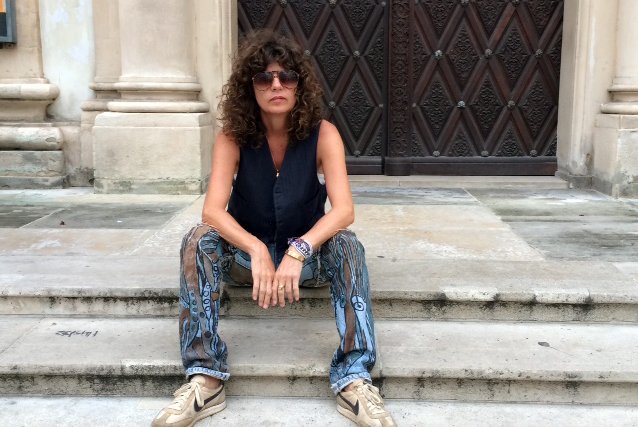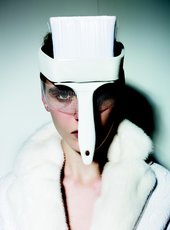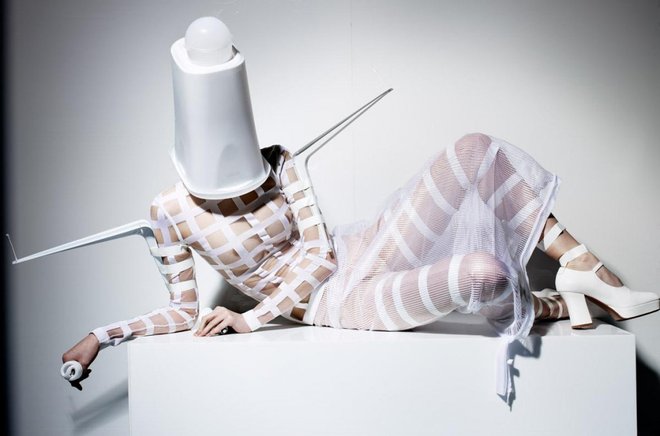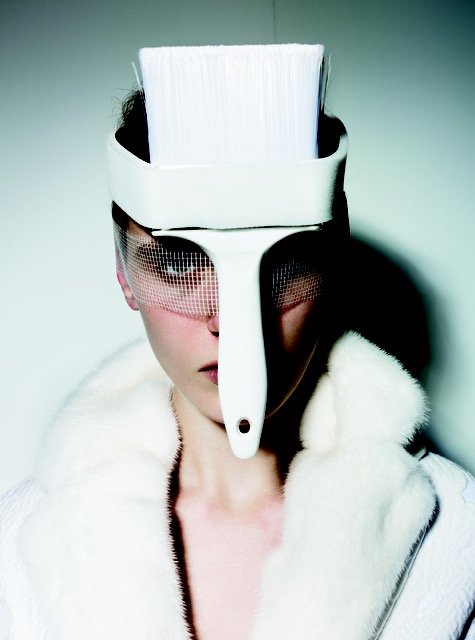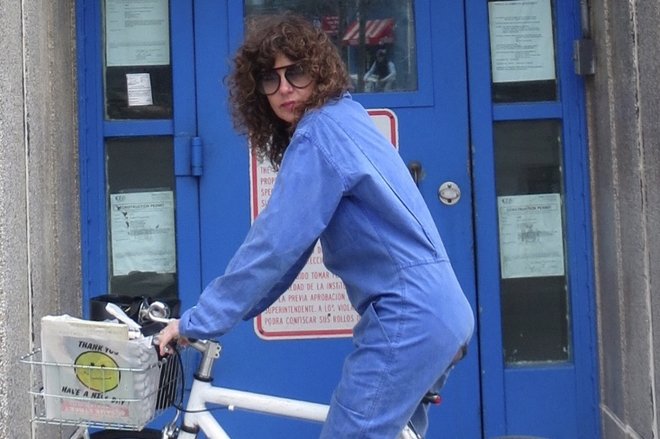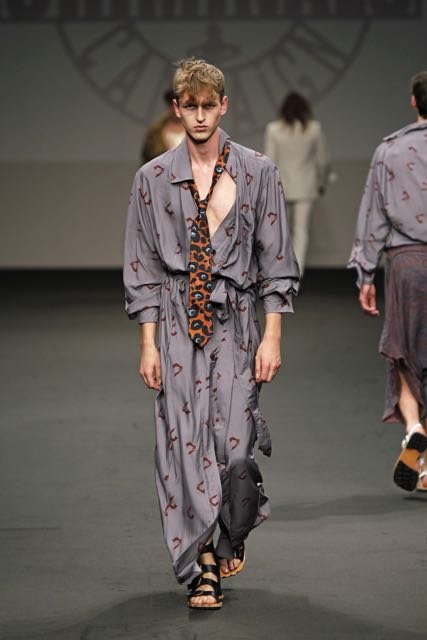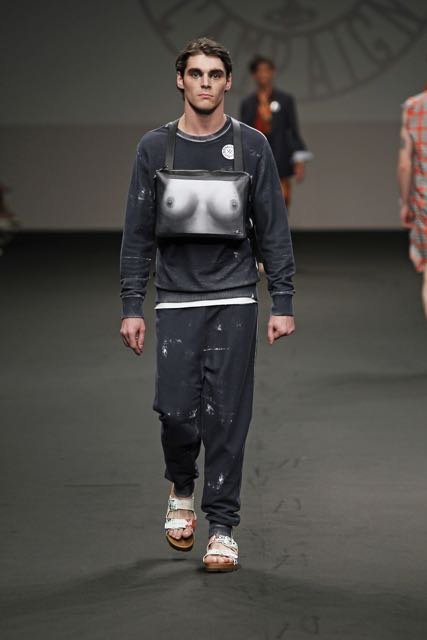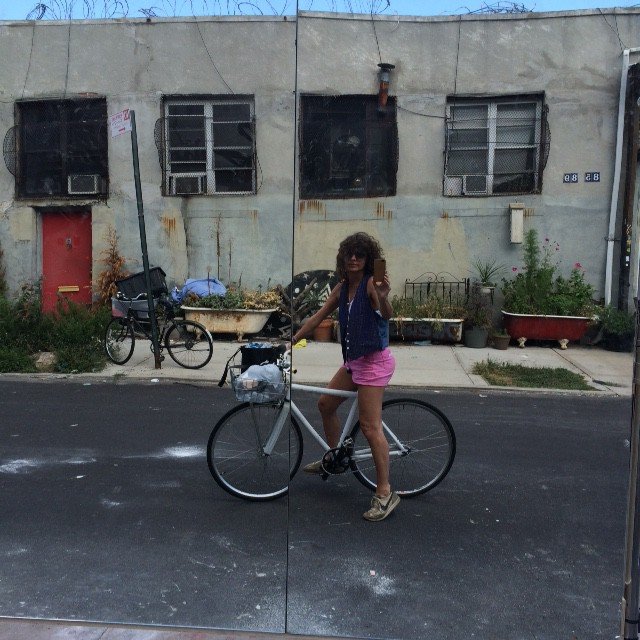An Afternoon Coffee In New York
The Austrian Sabina Schreder styles campaigns of major international labels such as H&M and Celine, works with the best fashion photographers in the world, dresses celebrities like Amber Heard and sometimes even politicians in Washington. And she paints. We met her in her loft in Soho, New York, for an amusing afternoon coffee.
Antje Mayer-Salvi: As a stylist in New York can you also promote Austrian fashion designers?
Sabina Schreder: Yes, absolutely. True enough though, I should do that more often. The only problem is that their collections are in Vienna and not here in the US. For example, I really like the Viennese designer Petar Petrov. Just recently I got a suit from him as a gift, and when I wear it in New York everyone asks me about it.
"I am fascinated the poetry of Japanese graphic art"
Let’s disclose some hot news! I’ve heard you’ll design fashion yourself now?
Yes, it’s true. At the moment, I’m working on founding my own label. Its name is “Sabina” and will be available online and in select stores latest by spring 2016.
Are we allowed to know more?
It’s still a secret (laughs).
When did you actually decide to become a stylist?
I never really decided for it. It happened by coincidence. I moved to Vienna when I was 17, after my graphic design education at the Höhere Graphische Lehr- und Versuchsanstalt in Linz. Then I studied fashion design with Jean-Charles de Castelbajac and Vivienne Westwood at the University of Applied Arts Vienna. Parallel I did jobs as a freelancer for ad agencies like GGK, Demner & Merlicek, and DDB. But soon I realized that I’m not really an advertiser. I was far more fascinated by working with fashion and clothing, or the poetry of Japanese graphic art. By the way, originally I wanted to study painting with Arnulf Rainer…
"My career actually started with Elfi Semotan."
You paint, too?
I love painting and drawing, but only for myself, mostly portraits of friends. I used to cover the entire staircase of my country house with paintings.
You also own a house on the countryside? I envy you!
Yes, in Upstate New York, together with Elfie Semotan (famous Austrian photographer and Helmut Lang’s muse – editor’s note). She visited me once in New York. An old timber cottage with a big veranda had caught my eye, and she spontaneously said: “I also like it there, I’m on board.” And because people always ask me: Yes, we get on really well together! We also have a similar taste for interior design!
Do you still work with Elfie Semotan occasionally?
It has been a while, but in summer 2014 we photographed a campaign for Liska furs in Vienna. My career actually started with her! She’s a few years older than me, but still very cool. And my father Heli Schreder is also cool (laughs).
My father is cool, too!
So we both have been lucky! (laughs) When my father visits me in New York, and he does it quite often, he still hits the town at night. My father is a self-employed graphic designer, painter, and designer in Linz, and he’s quite successful with it. He used to design Atomic skis and created many things for Logo-Dan kitchens. Now he paints mostly. He is selling well. Nice things!
Did you inherit your artistic talent from your father?
Yes, and from my uncle, who also worked as a graphic designer. My mother also wanted to study fashion, but she wasn’t allowed to. She had to learn a “decent job”. This was the opinion people had on the countryside back then. I was also sent to a convent school.
Leaving convent school, Linz, Vienna, and then to New York – was this a big step for you?
At that time, the Internet was not so common yet. When you wanted to introduce yourself somewhere you had to travel there personally. So I flew to London with a befriended photographer. We went door to door to all the important people there and told them we would like to do something for them. We were lucky that we soon got the chance to work for the London magazines “The Face” and “Dazed & Confused”, which were relatively new on the market at that time. Then, in 1998, I moved from Vienna to New York with my boyfriend at the time, a graphic designer. He had a job offer there. We weren’t “rich kids” and had to fight our way through. But because of London my starting position was pretty good.
"I also style politicians in Washington or celebrities."
Has work as a stylist changed since the end of the 90s?
Thanks to the Internet I don’t have to personally visit all the showrooms anymore and sort through the clothes. Today you go to vogue.com, where you see everything at first glance and compose the look that you want.
Why do you think that clients book you time and again? I find your style quite conceptual. I hope the question doesn’t offend you – a good stylist stands out because of her diversity perhaps?
No, not at all. I like that it is interpreted in that way. I think people notice that I come from graphic design, that Japan continues to fascinate me, and that my work is quite conceptual and less intuitively from the stomach. But that’s a matter of opinion. A good friend of mine, for example, said that I work very intuitively. I don’t just want to dress a look and that’s it. I have fun when I can work creatively, whether for editorials or commercial commissions. My works for Aldo, Sisley, Premiata, Cesare Pacioti, Vivienne Westwood, H&M, Margiela, Hugo Boss, or Uniqulo come to mind. But I also style politicians in Washington or celebrities. Such things.
"I get my inspiration more from analog sources."
I know it’s not your thing, but please show off a bit!
Okay, I’ll try… (thinks for a while) Shortly after my arrival in New York I got to know the photographer Terry Richardson and made all the Sisley campaigns with him. We were pretty successful, good works. Today it wouldn’t work like this anymore. I went uptown to Sisley and searched out everything I needed for my styles. They just threw everything in big bags, and we went somewhere on our own where it was cool: to Los Angeles or to the desert in Nevada. That was really something.
How do you prepare for such an editorial?
I research in the Internet, sure, but for the most part I get my inspiration from analog sources, from books and catalogs, be it art books or even old photo books. I compile my concepts on the basis of pictures, then I collect the outfits and accessories that fit the story and send everything to my assistant who designs a PDF from it. Finally, I look for the appropriate photographer and then for a good location together with him or her.
How is a stylist of your caliber paid?
Advertising jobs take care of the income, as is the case with many others who are active in creative fields. And these jobs are very well paid. But to sustain the level on which I am working I also do a lot of editorials, which are moderately paid when at all. On the whole, I can manage life in New York quite fine this way.
Do you sometimes long for Vienna and Austria?
I miss my family, my friends, the good food, and Austrian culture. I manage to go to Austria twice a year. Not often enough. My style is definitely based on a European identity. This summer I was there again, and it was wonderful. I almost didn’t want to leave, but it’s always like that for me.
Thank you for the coffee and the talk.
The stylist Sabina Schreder was born in Austria. She moved to New York in 1998 and took on styling work for Vogue, Another Magazine, and for labels like Sisley and Premiata as well as working for various photo productions with Elfie Semotan, Terry Richardson, Cedric Buchet, Richard Burbridge, Mario Sorrenti, Steven Meisel, Alexei Hay und Maria Ziegelböck. She designed shoes for Stephane Kélian.
She was born in Linz, studied at the Höhere Graphische Lehr- und
Versuchsanstalt, and participated in the master class for fashion at the
University of Applied Arts with Jean Charles de Castelbajac and Vivienne Westwood.
She worked at advertising agencies on the side and was initially represented by the renowned photo and styling agency Walter Schupfer New York.

